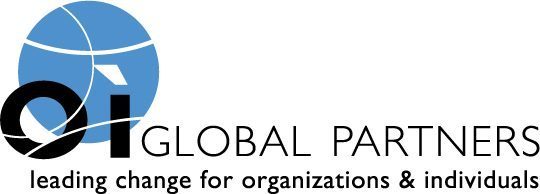There are many, many books written on leadership. Some recent ones advocate for “resonate leadership,” “authentic leadership” or “agile leadership.” These are all valid approaches to becoming a successful leader. But what really defines a leader?
 What defines a good leader is the ability to inspire a team toward a unified vision for the organization’s success. In other words, good leaders help their teams know exactly what the goals are for the company, business unit or department. When the team knows exactly what their group needs to accomplish, and they have the tools and resources to accomplish it, they will be committed and make the contribution they need to achieve those goals. If all the teams are heading in the same direction, the organization can achieve its goals. Without everyone focused on the same goals—and understanding their role in achieving those goals—no organization can accomplish all it wants to efficiently and effectively. And without every employee’s involvement, you aren’t building the commitment, enthusiasm and tapping the expertise of everyone in the organization.
What defines a good leader is the ability to inspire a team toward a unified vision for the organization’s success. In other words, good leaders help their teams know exactly what the goals are for the company, business unit or department. When the team knows exactly what their group needs to accomplish, and they have the tools and resources to accomplish it, they will be committed and make the contribution they need to achieve those goals. If all the teams are heading in the same direction, the organization can achieve its goals. Without everyone focused on the same goals—and understanding their role in achieving those goals—no organization can accomplish all it wants to efficiently and effectively. And without every employee’s involvement, you aren’t building the commitment, enthusiasm and tapping the expertise of everyone in the organization.
I have always thought that defining successful leadership was pretty easy. For years, I have told executives who are interviewing with a new organization to develop two questions about the organization’s strategy, market challenges or competition. Then, in their interviews, they should ask each of the people who would be their peers the same two questions. What the interviewee wants to know is, does everyone give the same answer to those two questions? When everyone gives the same answer, they clearly understand what the organization’s goals are. This is the result of effective leadership. Yet, it is amazing to me how often executive candidates tell me they received different answers from every person they asked.
How do you ensure that your teams have a unified vision, understand the organization’s goals and have a clear idea what their group needs to accomplish and when? How can you be viewed and defined as a successful leader?
First
The organization must have a good strategic plan with milestones and a timeline. If you don’t know exactly where you are going, it’s going to be hard to have everyone follow the plan and measure progress. The plan must have not only strategic goals, but tactics, dates for completion and accountability.
Second
Everyone in the organization needs to understand their role in implementing the plan. This seems so obvious, but very often the tactics and accountability are only loosely defined for departments or groups. It is typical that the lower in the organization you go, the less each employee understands their role in achieving the goals, and the less committed they feel to achieving them. Having everyone understand how their role connects to the success of the plan is not a one-time presentation, but a continuous focus on reinforcing the commitment required by everyone.
Third
For organizations that are growing rapidly and adding staff from many different organizations and cultures (including those not as focused on setting goals and accountability), a strong orientation or onboarding program and constant reinforcement is required.
Lastly
As milestones are met and goals are achieved, new goals, timelines and metrics need to be established. Celebrate the successes, but keep the growth, the commitment and the sense of achievement going. To paraphrase an old line: “Organizations in motion stay in motion; organizations running in place don’t move ahead.” Gravity keeps pushing organizations to slow down; they require a lot of energy to keep moving forward successfully.
If you have all your direct reports give the same answers to people interviewing with your organization, have all your team focused on, and committed to, the same goals, then you will be defined as a leader. You will build commitment, inspire employees, and people will want to follow you because everyone wants to be successful.
We want to hear what you have done or are doing to inspire people to a unified vision, to clearly communicate your organization’s goals. What are your thoughts?


No responses yet